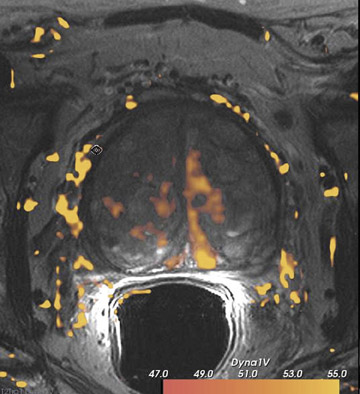MRI Can Help Differentiate Clinically Significant Prostate Cancer in PI-RADS Categories 3 or Higher
 In men with suspected or known prostate cancer who underwent multiparametric MRI and MRI/US-guided biopsy reports that the rates of clinically significant prostate cancer (csPCa) differed between consecutive PI-RADS categories of 3 and higher, and MRI features can improve detection. The single-center prospective study of 454 men found that multiparametric MRI (mpMRI) features, including lesion volume, shape, and EPE scores of 2 and 3, predicted csPCa. The study was published Radiology.
In men with suspected or known prostate cancer who underwent multiparametric MRI and MRI/US-guided biopsy reports that the rates of clinically significant prostate cancer (csPCa) differed between consecutive PI-RADS categories of 3 and higher, and MRI features can improve detection. The single-center prospective study of 454 men found that multiparametric MRI (mpMRI) features, including lesion volume, shape, and EPE scores of 2 and 3, predicted csPCa. The study was published Radiology.
The study also found that upgrading transition zone lesions from category 2 to 3 may lead to unnecessary biopsies. Additional predictors of csPCa were lesion volume divided by prostate volume (odds ratio [OR], 1.6; P < .001) and surface to volume ratio (OR, 6.2; P = .02).
The researchers evaluated the MRI scan using PI-RADS version 2.1. Atypical transition zone (TZ) nodules were upgraded to category 3 if marked diffusion restriction was present. Lesions with an International Society of Urological Pathology (ISUP) grade of 2 or higher (range, 1–5) were considered csPCa. MRI features, including three-dimensional diameter, relative lesion volume (lesion volume divided by prostate volume), sphericity, and sur-face to volume ratio (SVR), were obtained from lesion contours delineated by the radiologist. Univariable and multivariable analyses were conducted at the lesion and participant levels to determine features associated with csPCa.
In addition to confirming that PI-RADS version 2.1 helps stratify participants according to their risk for csPCa, the study also demonstrated notable differences in csPCa rates between categories 3 and 4 (14% [27 of 197 lesions] vs 37% [118 of 319 lesions], P < .001) and categories 4 and 5 (37% [118 of 319 lesions] vs 77% [114 of 149 lesions], P < .001). The authors note that multicenter prospective studies in biopsy-naive participants are needed to further evaluate the impact of PI-RADS version 2.1 changes and future PI-RADS iterations could incorporate the volumetric parameters and shape features extracted from multiparametric MRI as helpful markers for improving prostate cancer detection.